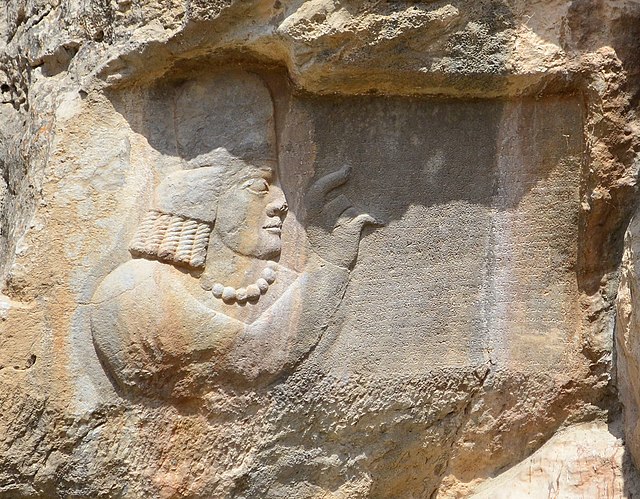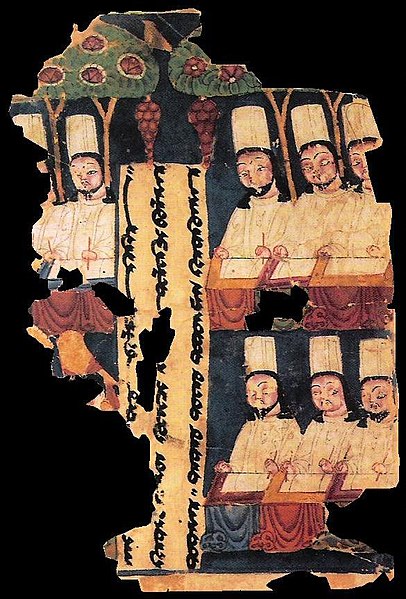Pahlavi is a particular, exclusively written form of various Middle Iranian languages. The essential characteristics of Pahlavi are:the use of a specific Aramaic-derived script;
the incidence of Aramaic words used as heterograms.
Parthian (above), along with Greek (below) and Middle Persian was being used in inscriptions of early Sasanian emperors. Shapur inscription in Naqsh-e Rajab
Inscriptional Pahlavi text from Shapur III at Taq-e Bostan, 4th century
Kartir's inscription at Naqsh-e Rajab
Sasanian relief with Inscriptional Pahlavi monogram.
The Sogdian language was an Eastern Iranian language spoken mainly in the Central Asian region of Sogdia, located in modern-day Uzbekistan, Tajikistan, Kazakhstan and Kyrgyzstan; it was also spoken by some Sogdian immigrant communities in ancient China. Sogdian is one of the most important Middle Iranian languages, along with Bactrian, Khotanese Saka, Middle Persian, and Parthian. It possesses a large literary corpus.
Seal with two facing busts and Sogdian inscription "Indamic, Queen of Zacanta", Kushano-Sasanian period, 300-350 CE. British Museum 119999.
Sogdian text from a Manichaean creditor letter from around 9th to 13th century
Manichaean priests (Uyghur Turks) writing Sogdian manuscripts, in Khocho, Tarim Basin, c. 8th/9th century AD
Sogdian Christian text written in Estrangelo, discovered at Turpan, 9th—11th century.








